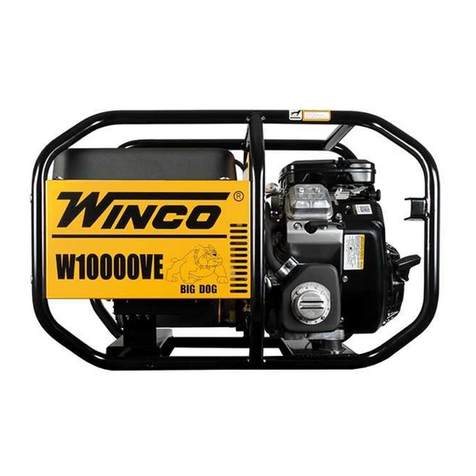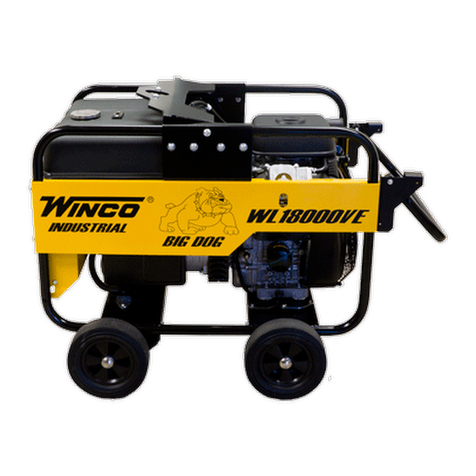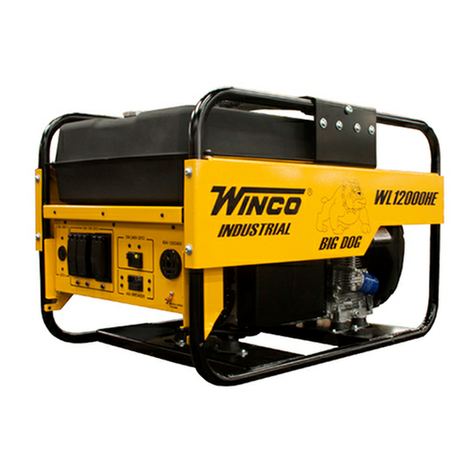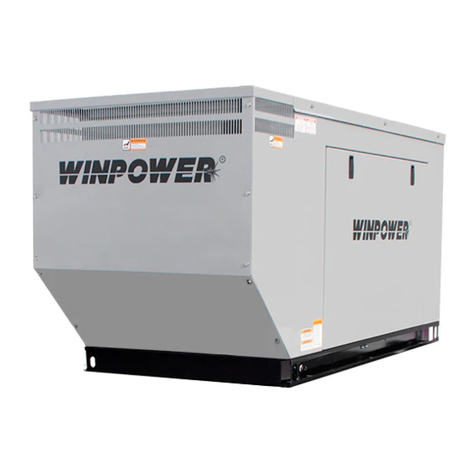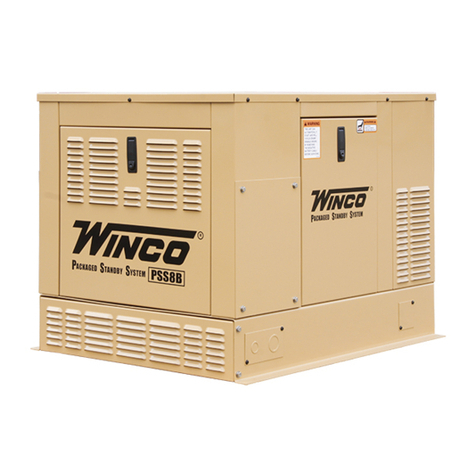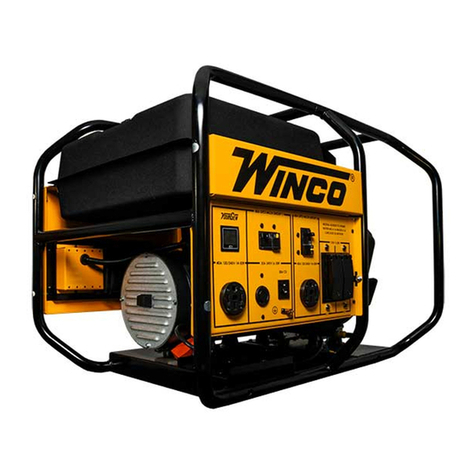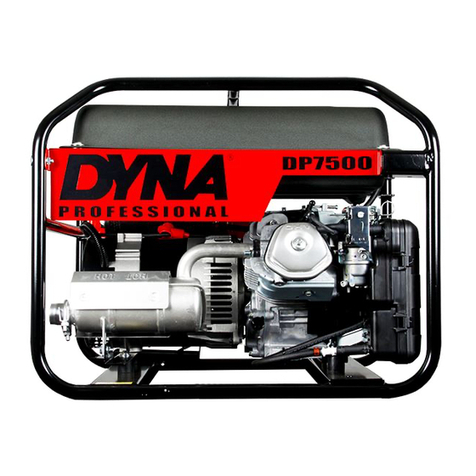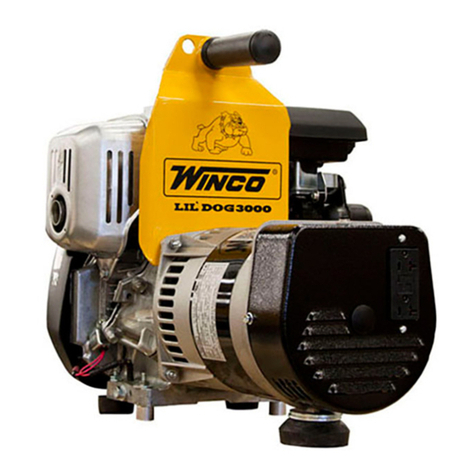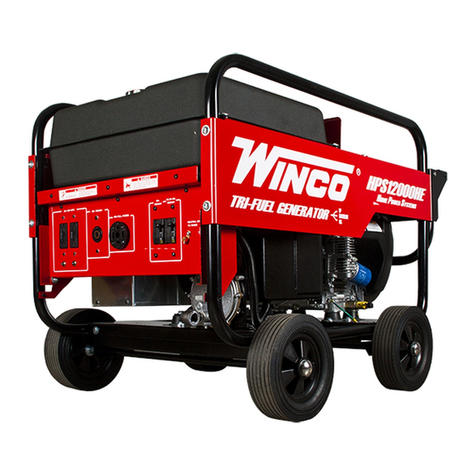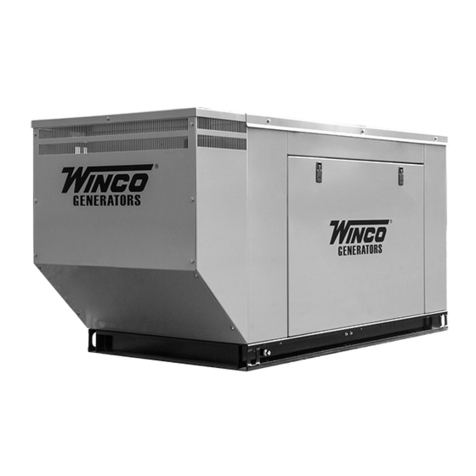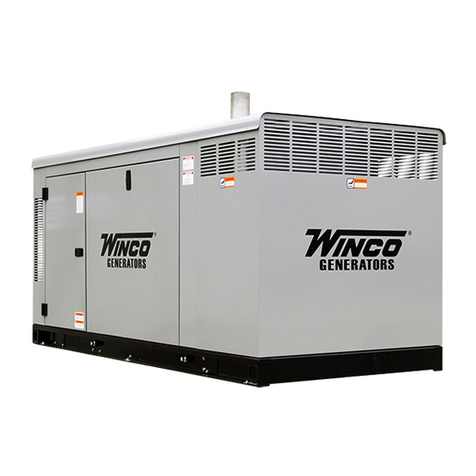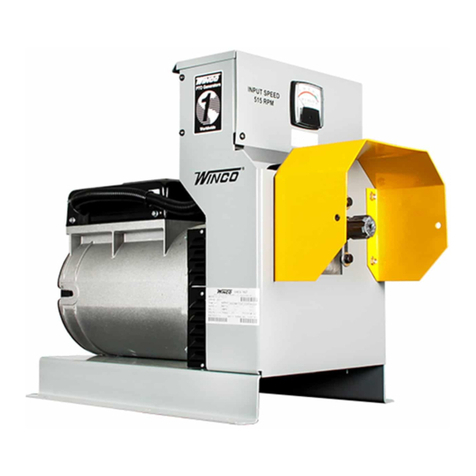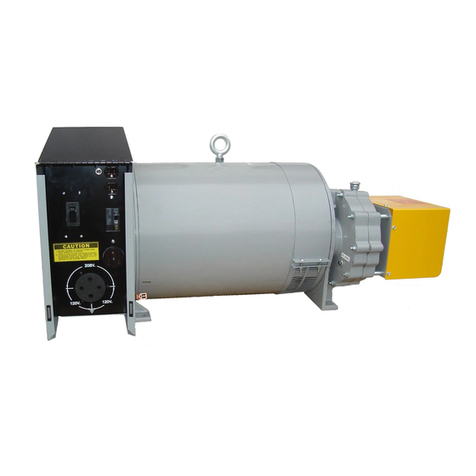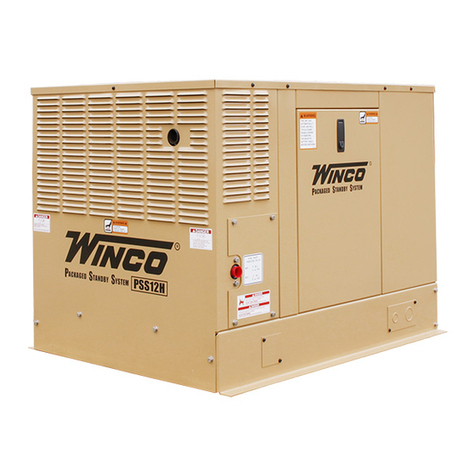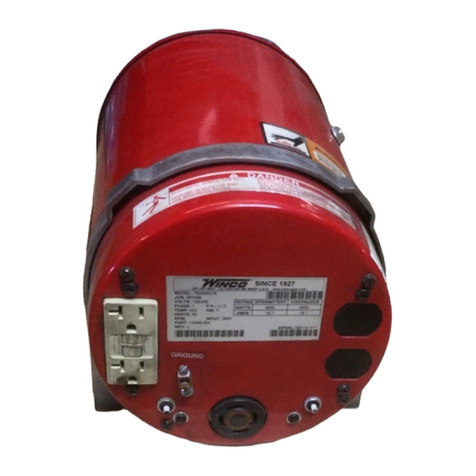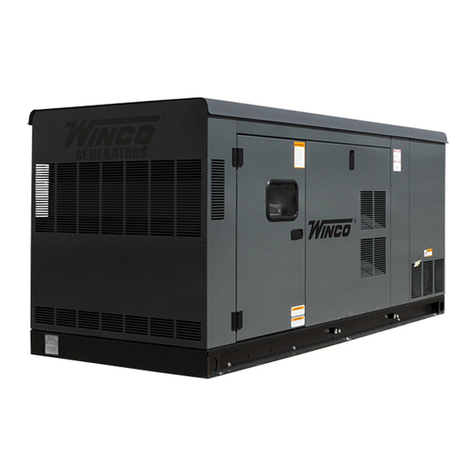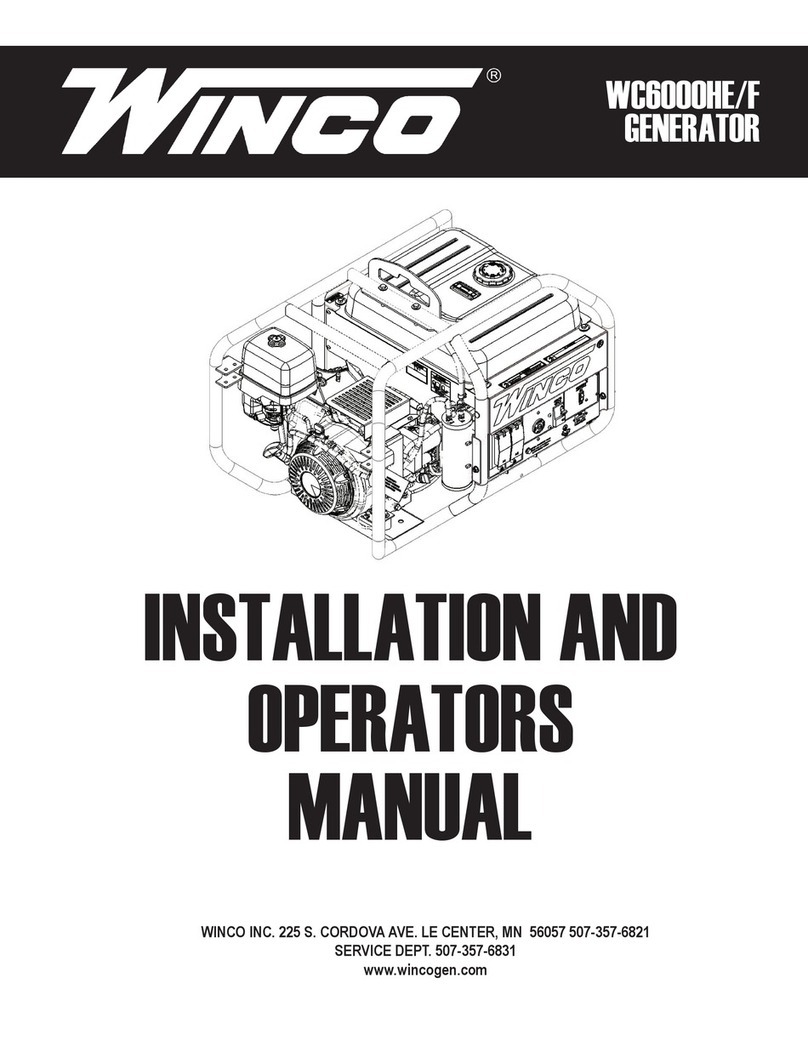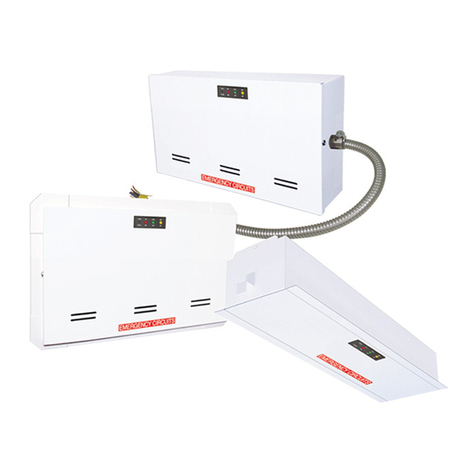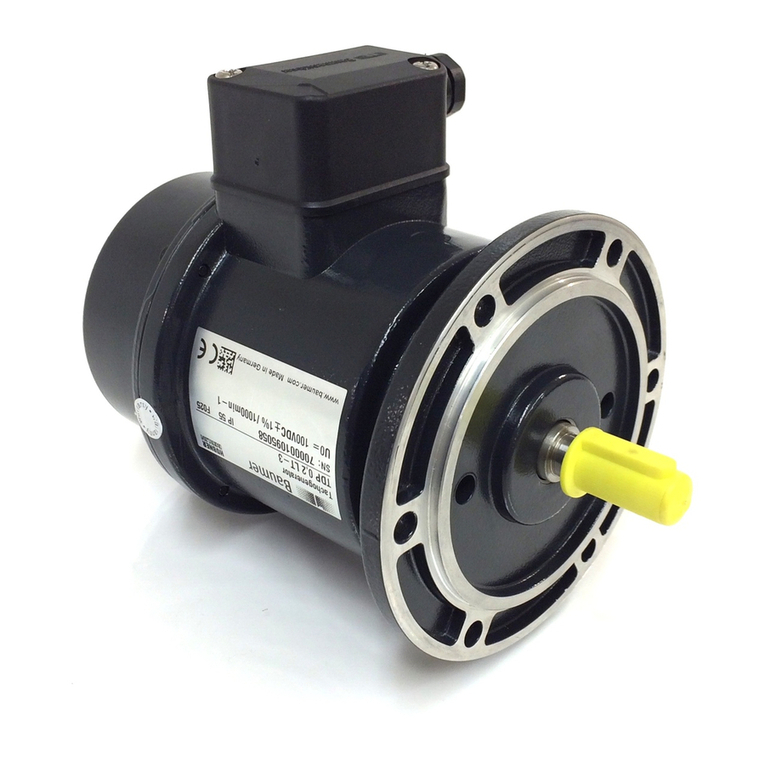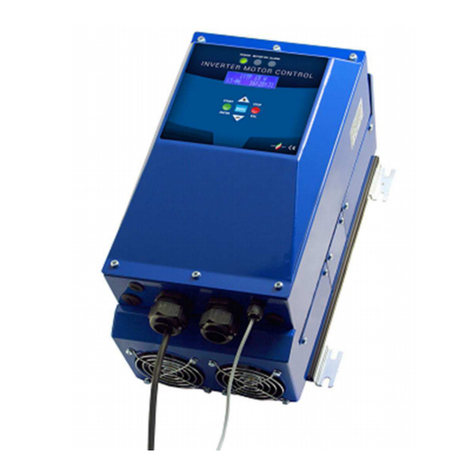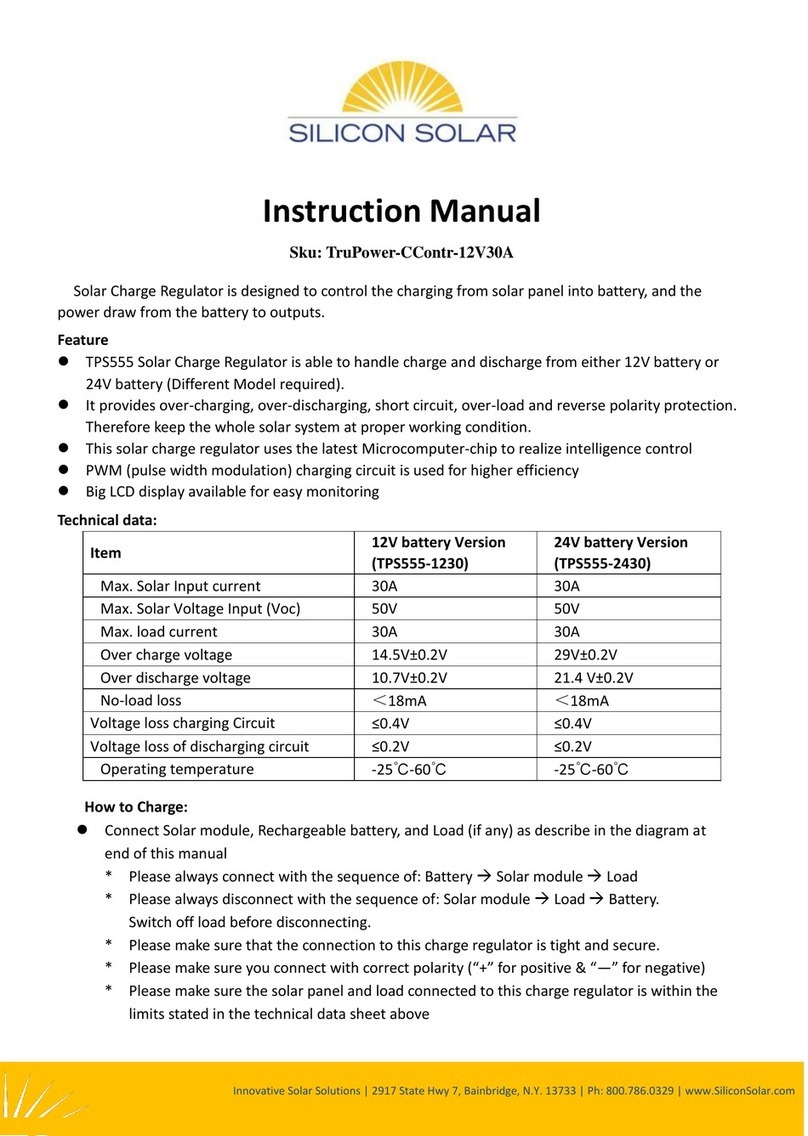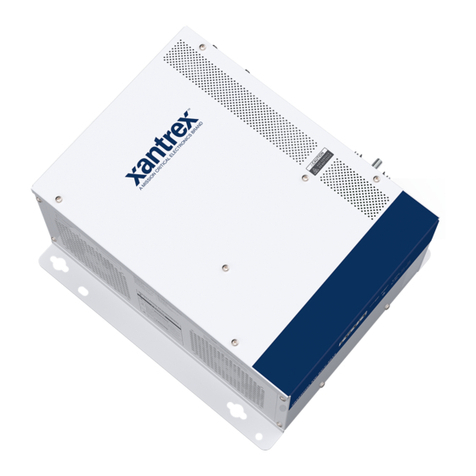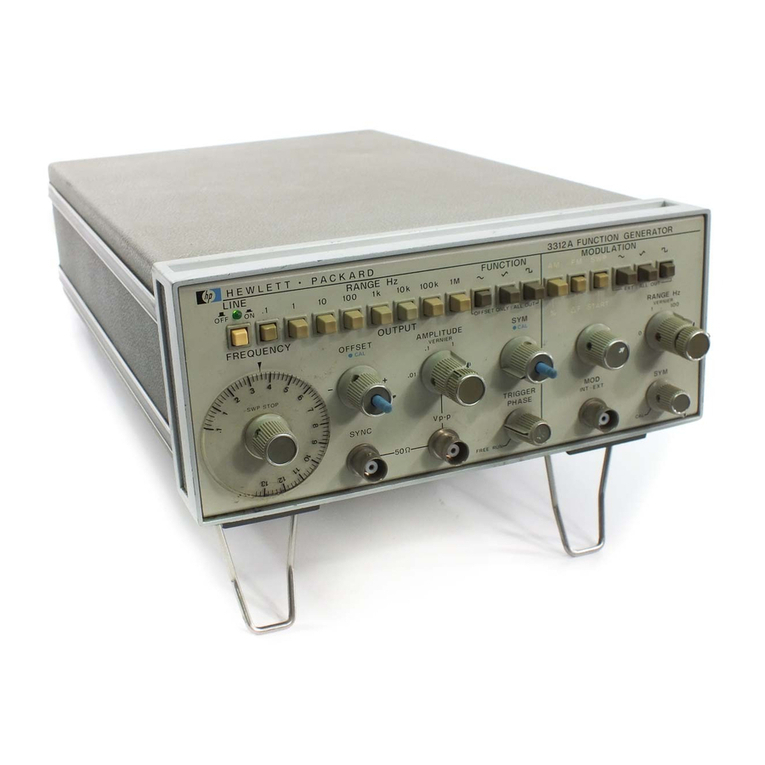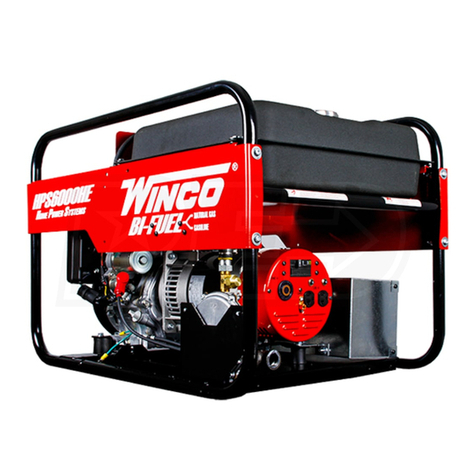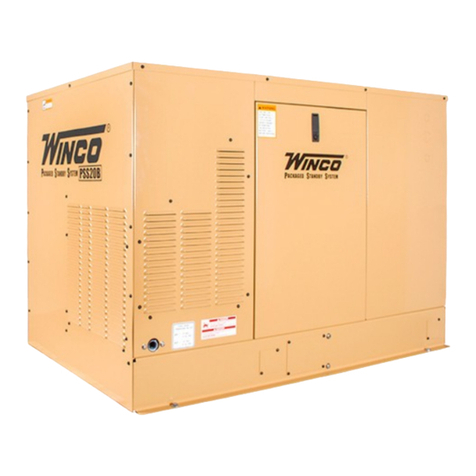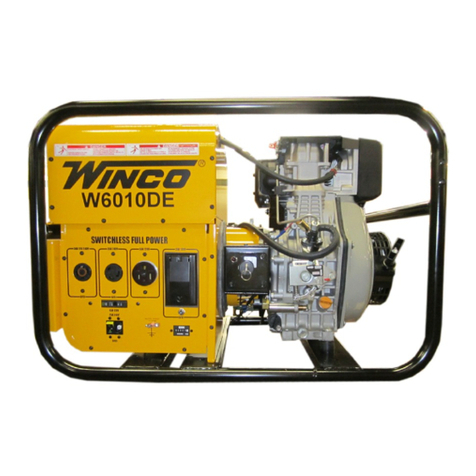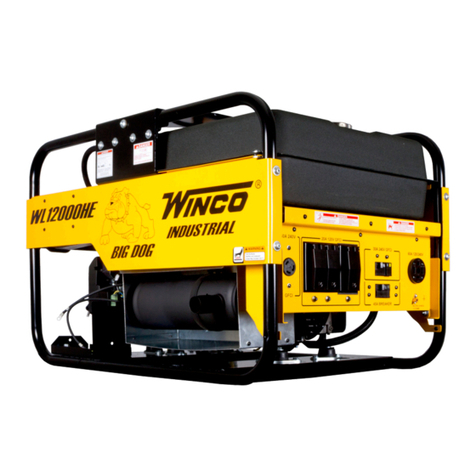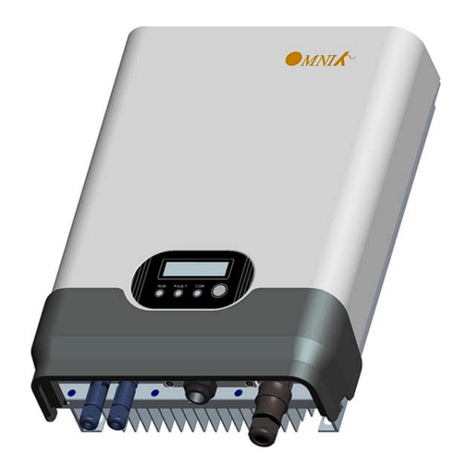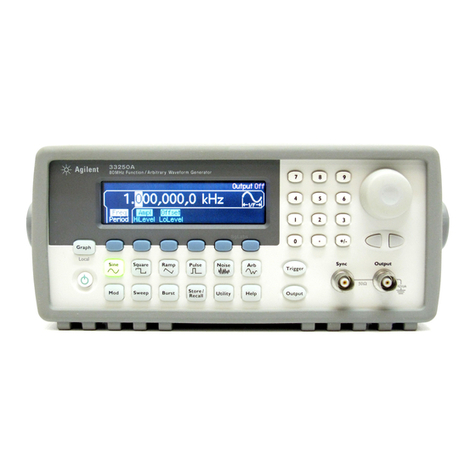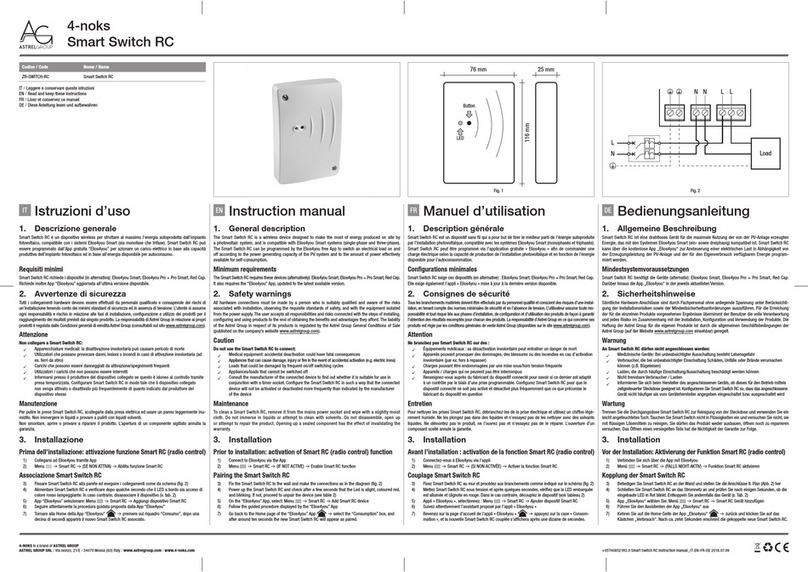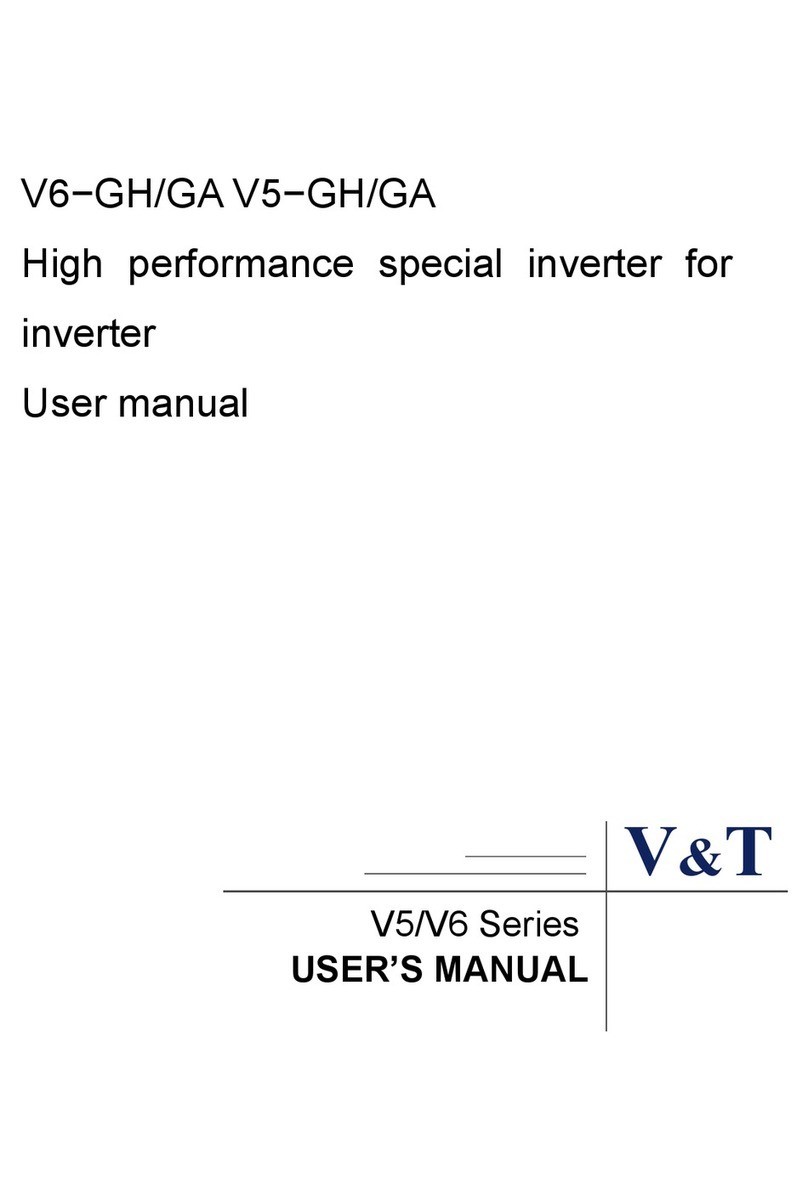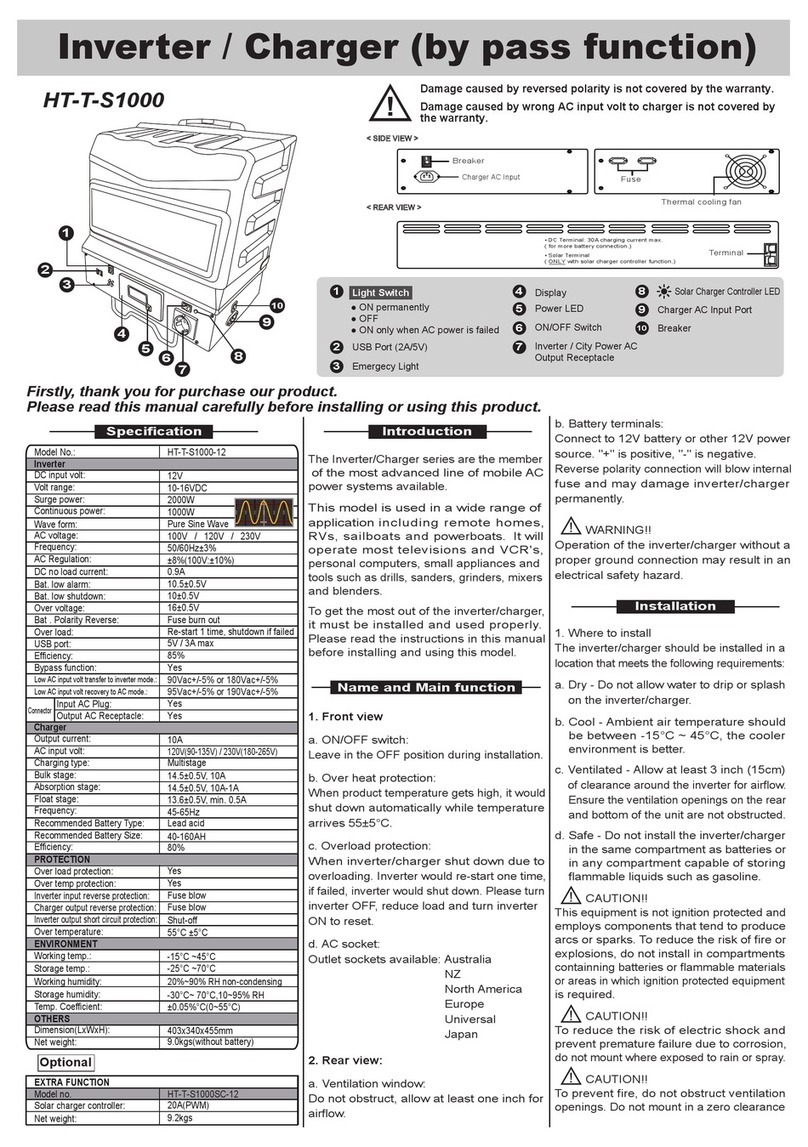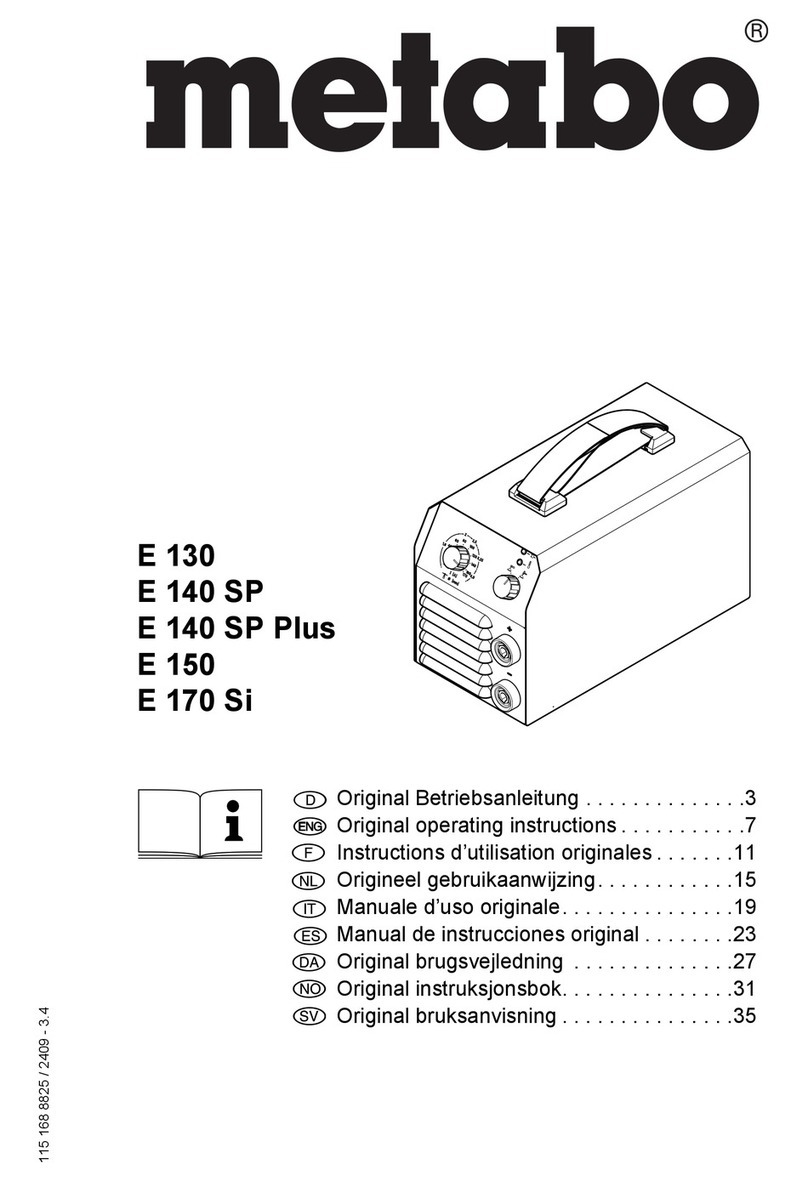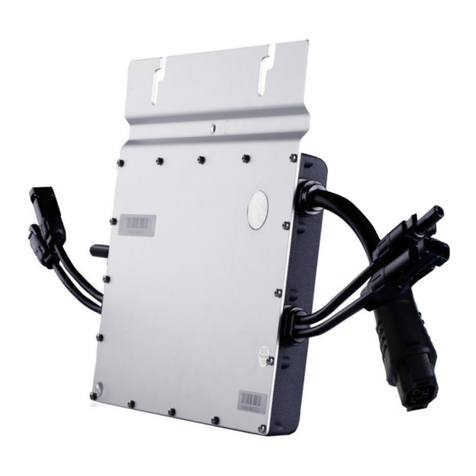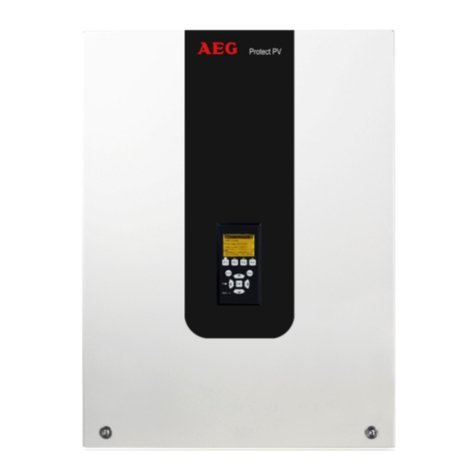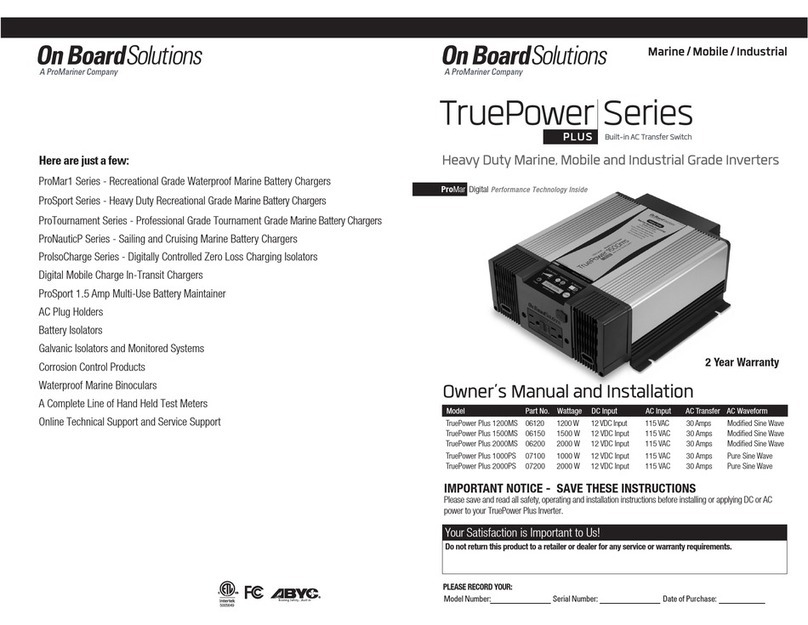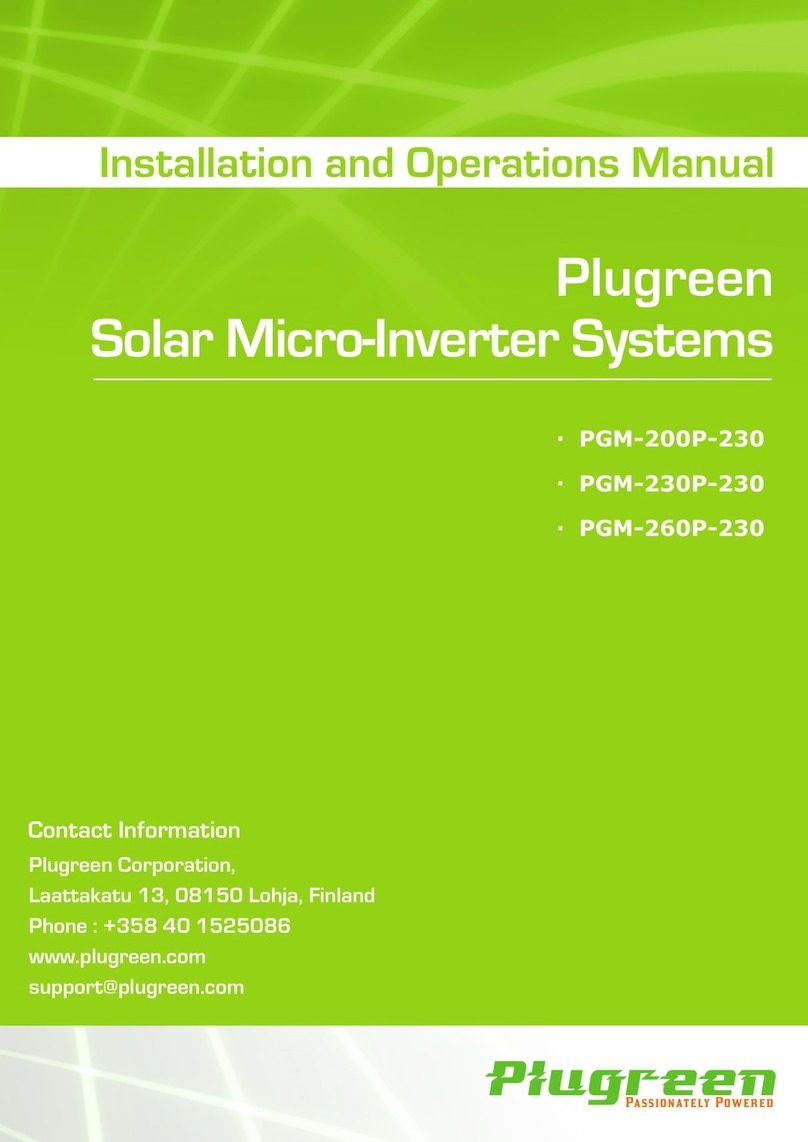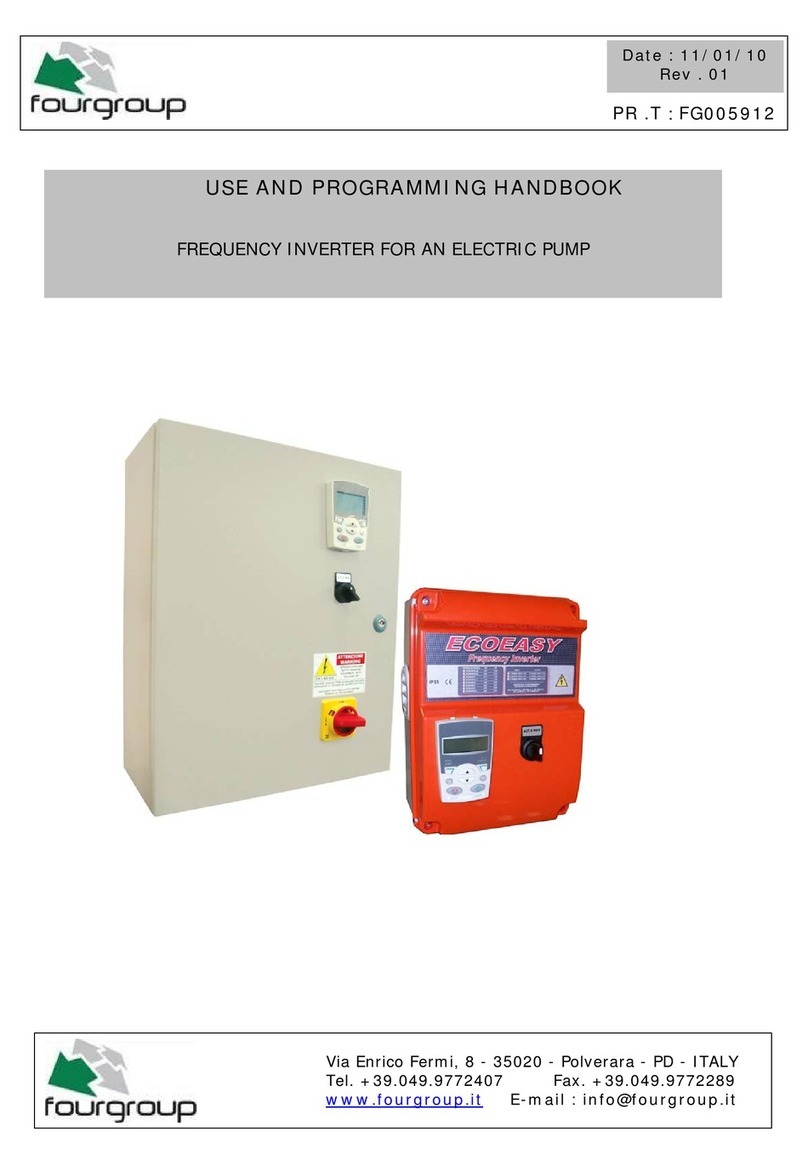
4REV B
OPM-116
INTRODUCTION
INTENDED USES
This engine generator set has been designed primarily for portable
heavy duty commercial use. Both 120 volt, NEMA 5-20R has been
provided in the control panel to plug in your loads (lights, portable tools,
and small appliances).
This portable unit requires large quantities of fresh air for cooling the
engine and generator. For safety, long life and adequate performance,
these units should never be run in small compartments without positive
fresh air ow.
RESTRICTED USES
DO NOT remove from the cradle assembly. Removal of the generator
from the cradle assembly may cause excessive vibration and damage
to the engine-generator set.
DO NOT install and operate this generator in a small compartment.,
i.e. generator compartments of vehicles, motor homes or travel
trailers. These compartments will not allow enough free ow of fresh
air to reach the engine generator set for cooling and will cause the
unit to overheat, damaging both the engine and generator. Small
compartments will also develop hot spots where there is very little air
ow and may cause a re.
PLEASE NOTE There are 3rd party companies making enclosures for
generators that have been properly engineered. The use of these 3rd
party enclosures is acceptable as long as they have been certied and
meet current code.
DO NOT attempt to operate at 50 cycles. These units are designed and
governed to operate at 60 cycles only.
UNIT CAPABILITIES
GENERATOR CONNECTIONS
DP3000/T: Rated at 3,000 starting Watts and 2,500 continuous Watts.
Generator full output can be drawn from the 120 Volt GFCI NEMA 5-20
receptacles, mounted on the end of the generator.
STARTING ELECTRIC MOTORS
Electric motors require much more current (amps) to start than to run.
Some motors, particularly low cost split-phase motors, are very hard
to start and require 5 to 7 times as much starting current as running
current. Capacitor motors are easier to start and usually require 2 to 4
times as much starting current as running current. Repulsion Induction
motors are the easiest to start and require only 1 1/2 to 2 1/2 times as
much starting as running current.
PREPARING THE UNIT
UNPACKING
CAUTION: EQUIPMENT DAMAGE
THIS UNIT HAS BEEN SHIPPED WITH OIL. Failure to maintain the
engine oil at the proper level will result in serious engine damage.
When you unpack your engine-generator set be sure to remove all the
information sheets and manuals from the carton.
1. As you receive your unit, it is critical to check it for any damage. If
any damage is noted, it is always easiest to refuse the shipment and
let WINCO take care of the freight claim. If you sign for the unit, the
transfer of the ownership requires that you le the freight claim
2. Before proceeding with the preparations of your new generator
for operation, take a couple of minutes to ensure the unit you have
received is the correct model and review the specication pages in this
manual to ensure that this unit meets your job requirements.
LUBRICATION
Before starting the engine, check that the crankcase has the proper
level of a good quality oil. The recommended grade oil and quantity
of oil required is listed in the engine operator’s manual and in the Oil
Recommendations section of this manual. The engine normally holds
19.5 ounces (0.61 quarts) of oil. Use the dipstick to ensure that you
Most fractional horsepower motors take about the same amount
of current to run them whether they are Repulsion Induction (RI),
Capacitor (Cap), or Split-Phase (SP) type.
If the electric motor is connected to a hard starting load such as an air
compressor, it will require more starting current. If it is connected to a
light load, or no load such as a power saw, it will require less starting
current. The exact requirement will also vary with the brand or design
of the motor.
Self-exciting generators respond to severe overloading differently than
utility power. When overloaded, the engine is not able to supply enough
power to bring the electric motor up to operating speed. The generator
responds with high initial starting current, but the engine speed drops
sharply. The overload may stall the engine. If allowed to operate at very
low speeds, the electric motor starting winding will burn out in a short
time. The generator winding might also be damaged.
CAUTION: EQUIPMENT DAMAGE
Running the generator set under these conditions may result in
damage to the generator stator as well as the motor winding.
The heavy surge of current required for starting motors is required for
only an instant. The generator will not be damaged if it can bring the
motor up to speed in a few seconds of time. If difculty is experienced
in starting motors, turn all other electrical loads off and if possible
reduce the load on the electric motor.
